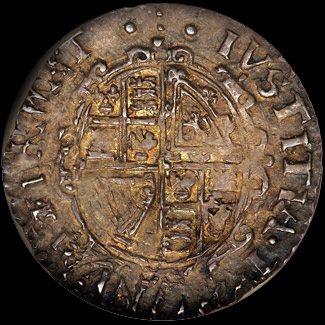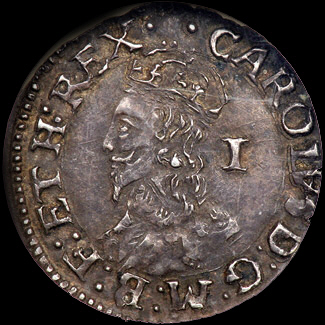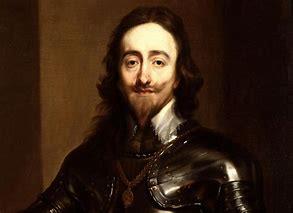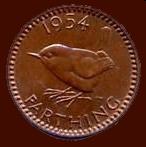














The Paragon Of Metal Detecting
Powered By Sispro1
British Sterling Currency - Numismatics,
Penny
For Reference ONLY
Everything For The Detectorist
Penny


Charles I 1625-1649 AD Stuarts
The reigns of Elizabeth I and James I had generated a large fiscal deficit for the kingdom.Notwithstanding the failure of Buckingham in the short lived campaigns against both Spain and France, there was in reality little economic capacity for Charles to wage wars overseas. England was still the least taxed country in Europe, with no official excise and no regular direct taxation. Without the consent of Parliament, Charles' capacity to acquire funds for his treasury was theoretically hamstrung, legally at least. To raise revenue without reconvening Parliament, Charles first resurrected an all-but-forgotten law called the "Distraint of Knighthood", promulgated in 1279, which required anyone who earned £40 or more each year to present himself at the King's coronation to join the royal army as a knight. Relying on this old statute, Charles fined all individuals who had failed to attend his coronation in 1626.
Later, Charles reintroduced obsolete feudal taxes such as purveyance, wardship, and forest laws. Chief among these taxes was one known as Ship Money, which proved even more unpopular, and lucrative, than poundage and tonnage before it. Under statutes of Edward I and Edward III, collection of ship money had been authorised only during wars, and only on coastal regions. Charles, however, argued that there was no legal bar to collecting the tax during peacetime and throughout the whole of the kingdom. Ship Money provided between £150,000 to £200,000 annually between 1634-1638, after which yields declined steeply. This was paid directly to Treasury of the Navy, thus making Northumberland the most direct beneficiary of the tax. Opposition to Ship Money steadily grew, with John Hampden 's legal challenge in 1637 providing a platform of popular protest. However, the royal courts declared that the tax was within the King's prerogative.
The king also derived money through the granting of monopolies, despite a statute forbidding such action (The Monopolies Act , 1624), which, though inefficient, raised an estimated £100,000 a year in the late 1630s in royal revenue. Charles also gained funds through the Scottish nobility, at the price of considerable acrimony, by the Act of Revocation (1625), whereby all gifts of royal or church land made to the nobility were revoked, with continued ownership being subject to an annual rent.
Charles I AR Penny. Tower issued under the King, circa 1625-42. CAROLVS . D : G : M : B : F : ET : H : REX . , cronwned Aberystwyth bust left, I behind / : . IVSTITIA THRONVM FIRMAT., garnished oval shield.
The reigns of Elizabeth I and James I had generated a large fiscal deficit for the kingdom.Notwithstanding the failure of Buckingham in the short lived campaigns against both Spain and France, there was in reality little economic capacity for Charles to wage wars overseas. England was still the least taxed country in Europe, with no official excise and no regular direct taxation. Without the consent of Parliament, Charles' capacity to acquire funds for his treasury was theoretically hamstrung, legally at least. To raise revenue without reconvening Parliament, Charles first resurrected an all-but-forgotten law called the "Distraint of Knighthood", promulgated in 1279, which required anyone who earned £40 or more each year to present himself at the King's coronation to join the royal army as a knight. Relying on this old statute, Charles fined all individuals who had failed to attend his coronation in 1626.
Later, Charles reintroduced obsolete feudal taxes such as purveyance, wardship, and forest laws. Chief among these taxes was one known as Ship Money, which proved even more unpopular, and lucrative, than poundage and tonnage before it. Under statutes of Edward I and Edward III, collection of ship money had been authorised only during wars, and only on coastal regions. Charles, however, argued that there was no legal bar to collecting the tax during peacetime and throughout the whole of the kingdom. Ship Money provided between £150,000 to £200,000 annually between 1634-1638, after which yields declined steeply. This was paid directly to Treasury of the Navy, thus making Northumberland the most direct beneficiary of the tax. Opposition to Ship Money steadily grew, with John Hampden 's legal challenge in 1637 providing a platform of popular protest. However, the royal courts declared that the tax was within the King's prerogative.
The king also derived money through the granting of monopolies, despite a statute forbidding such action (The Monopolies Act , 1624), which, though inefficient, raised an estimated £100,000 a year in the late 1630s in royal revenue. Charles also gained funds through the Scottish nobility, at the price of considerable acrimony, by the Act of Revocation (1625), whereby all gifts of royal or church land made to the nobility were revoked, with continued ownership being subject to an annual rent.
Charles I AR Penny. Tower issued under the King, circa 1625-42. CAROLVS . D : G : M : B : F : ET : H : REX . , cronwned Aberystwyth bust left, I behind / : . IVSTITIA THRONVM FIRMAT., garnished oval shield.
Royal Monarchy
Copyright © All Rights Reserved by Nigel G Wilcox · · E-Mail: ngwilcox100@gmail.com
Designed by Nigel G Wilcox
INFORMATION - DATA
Pages

We do NOT buy or sell coins
Charles I
6. S. Menu
Main Coin Menu

VIEW ALL MENUS
Member NCMD
























